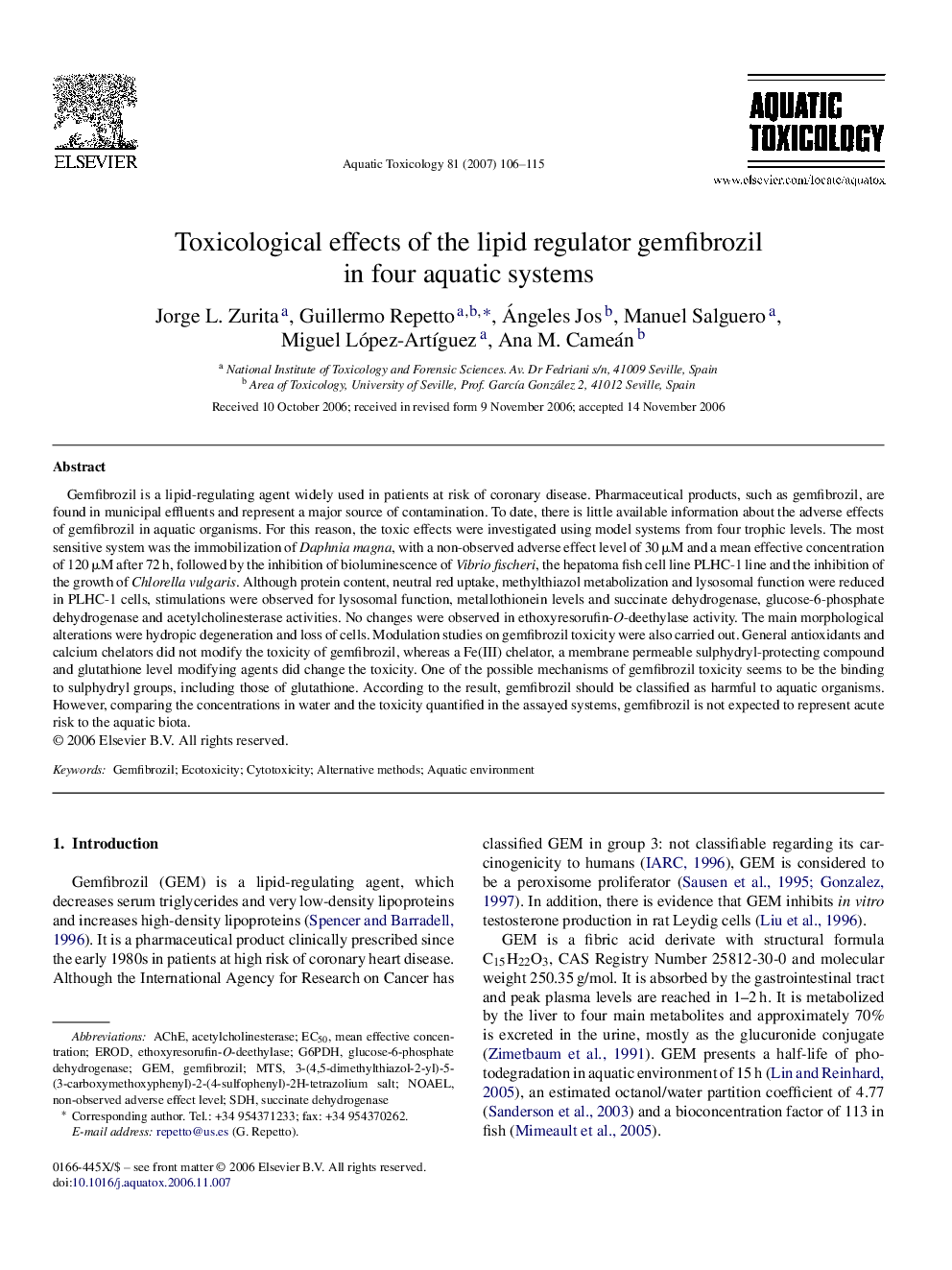| Article ID | Journal | Published Year | Pages | File Type |
|---|---|---|---|---|
| 4531176 | Aquatic Toxicology | 2007 | 10 Pages |
Gemfibrozil is a lipid-regulating agent widely used in patients at risk of coronary disease. Pharmaceutical products, such as gemfibrozil, are found in municipal effluents and represent a major source of contamination. To date, there is little available information about the adverse effects of gemfibrozil in aquatic organisms. For this reason, the toxic effects were investigated using model systems from four trophic levels. The most sensitive system was the immobilization of Daphnia magna, with a non-observed adverse effect level of 30 μM and a mean effective concentration of 120 μM after 72 h, followed by the inhibition of bioluminescence of Vibrio fischeri, the hepatoma fish cell line PLHC-1 line and the inhibition of the growth of Chlorella vulgaris. Although protein content, neutral red uptake, methylthiazol metabolization and lysosomal function were reduced in PLHC-1 cells, stimulations were observed for lysosomal function, metallothionein levels and succinate dehydrogenase, glucose-6-phosphate dehydrogenase and acetylcholinesterase activities. No changes were observed in ethoxyresorufin-O-deethylase activity. The main morphological alterations were hydropic degeneration and loss of cells. Modulation studies on gemfibrozil toxicity were also carried out. General antioxidants and calcium chelators did not modify the toxicity of gemfibrozil, whereas a Fe(III) chelator, a membrane permeable sulphydryl-protecting compound and glutathione level modifying agents did change the toxicity. One of the possible mechanisms of gemfibrozil toxicity seems to be the binding to sulphydryl groups, including those of glutathione. According to the result, gemfibrozil should be classified as harmful to aquatic organisms. However, comparing the concentrations in water and the toxicity quantified in the assayed systems, gemfibrozil is not expected to represent acute risk to the aquatic biota.
